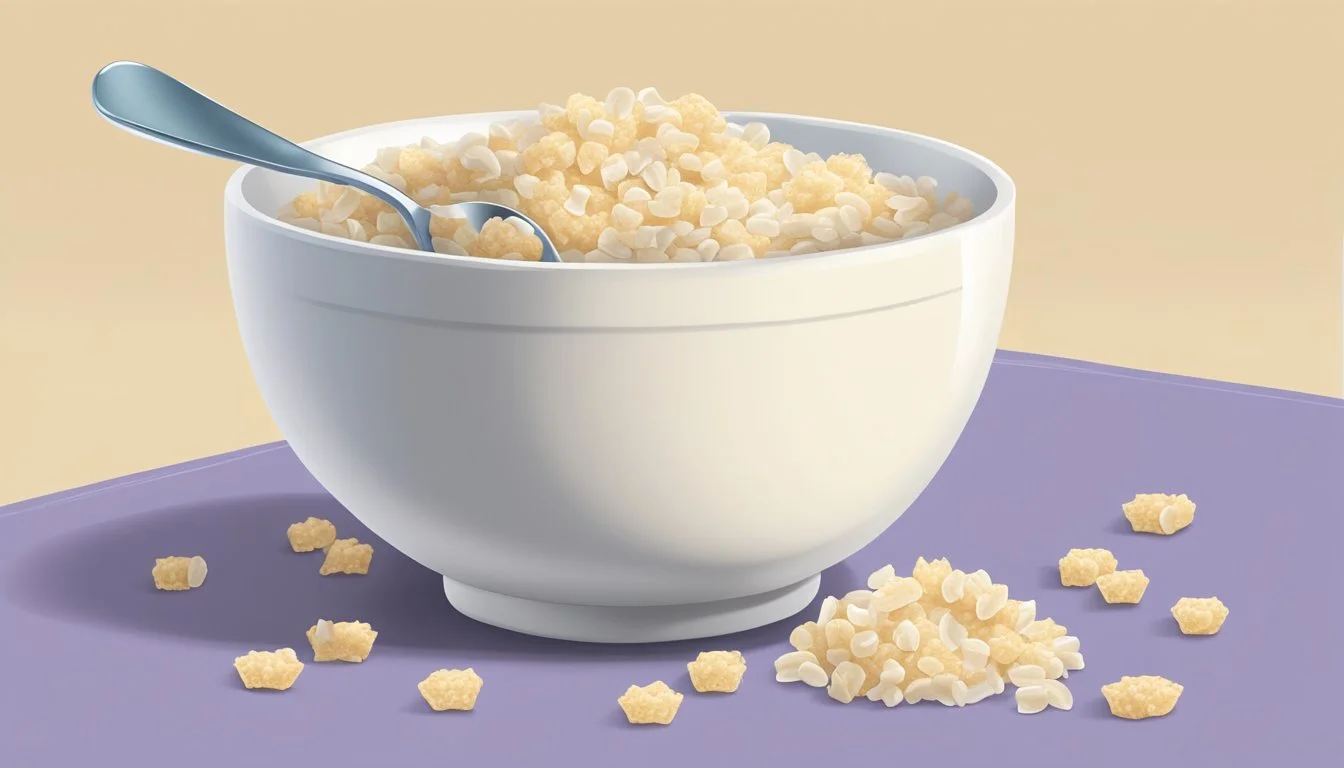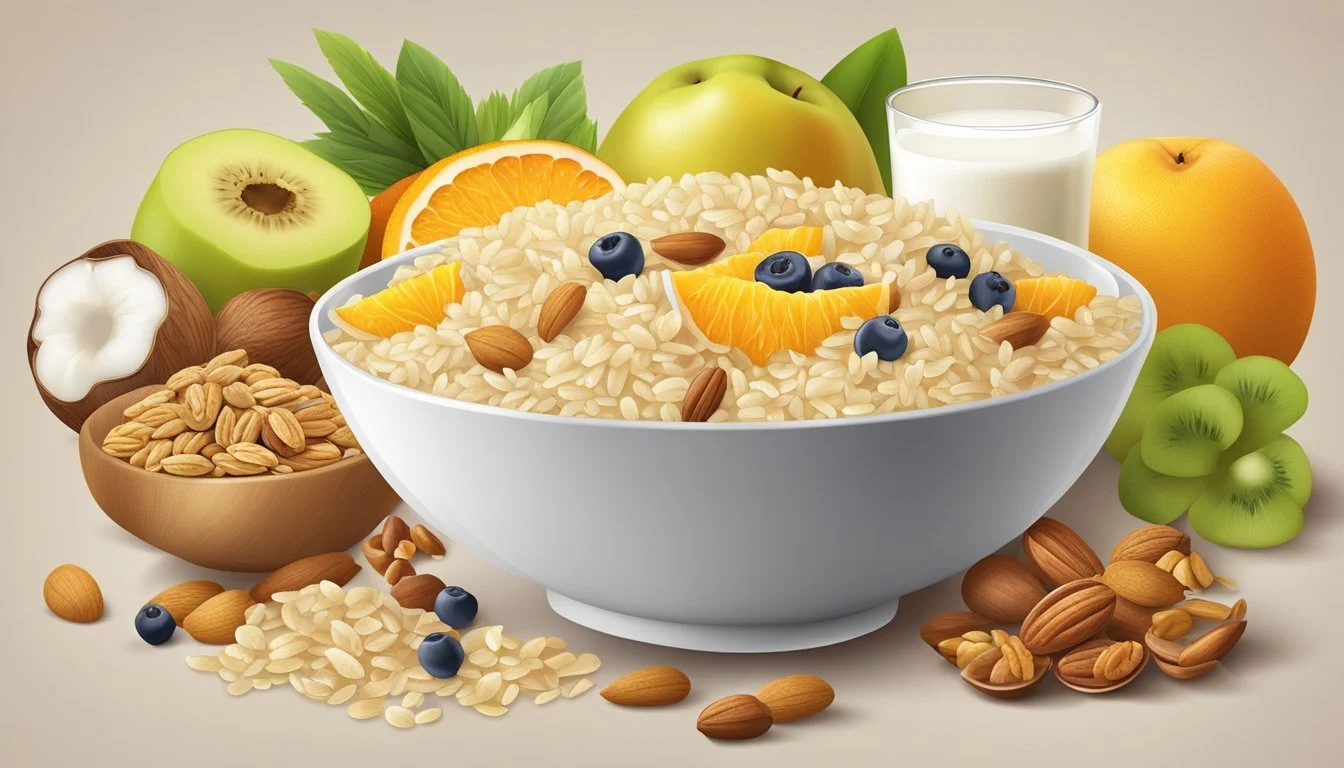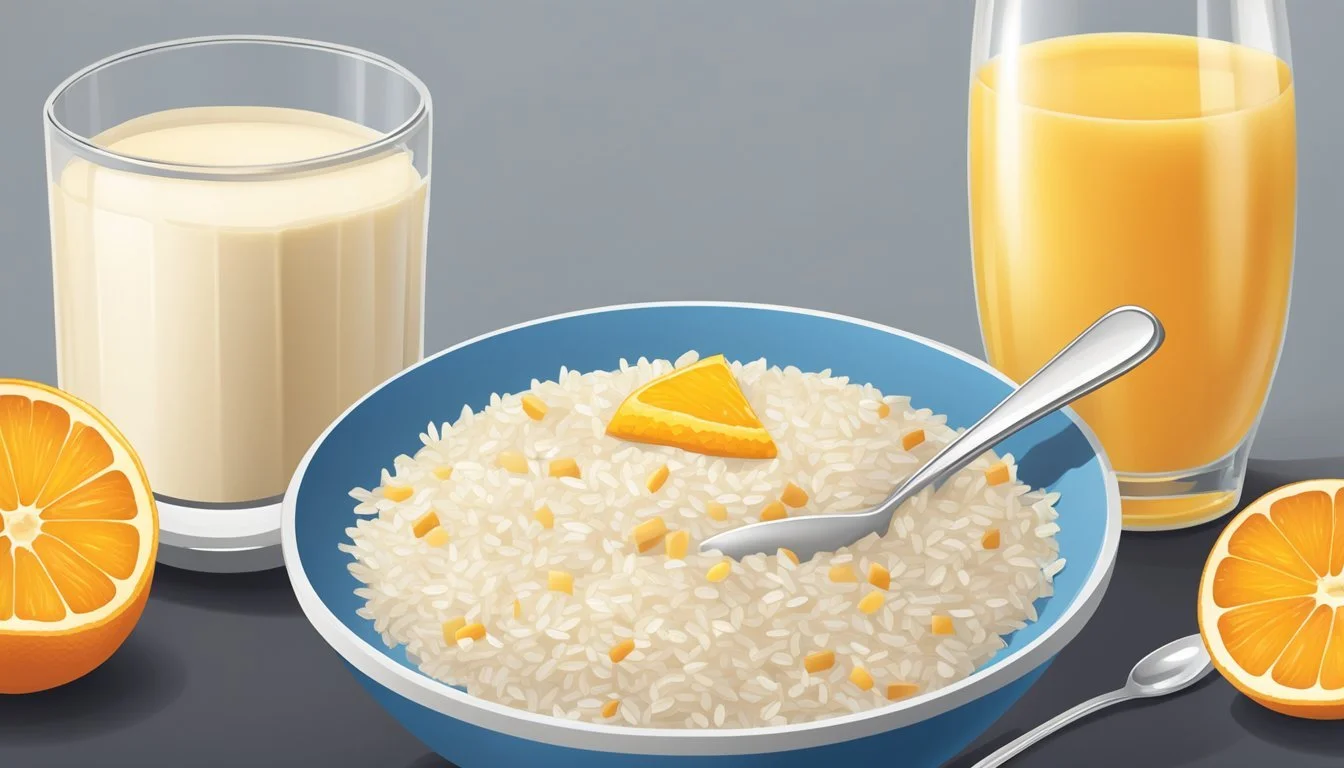Rice Chex Nutrition Facts & More
Essential Facts for Health-Conscious Consumers
Rice Chex is a popular breakfast cereal made from whole grain rice. This gluten-free option appeals to many consumers seeking a nutritious start to their day. A single serving of Rice Chex contains 160 calories, 1 gram of fat, 3 grams of sugar, and 330 milligrams of sodium.
The cereal also provides essential vitamins and minerals, including calcium, iron, zinc, and various B vitamins. These nutrients contribute to its reputation as a nutritious breakfast choice. Rice Chex offers a simple ingredient list, making it an attractive option for those who prefer minimally processed foods.
While Rice Chex is relatively low in sugar compared to many other cereals, it's important to consider portion sizes and any additional toppings when evaluating its overall nutritional impact. The cereal's crispy texture and mild flavor make it versatile for both breakfast and snacking purposes.
Rice Chex: An Overview
Rice Chex is a popular gluten-free breakfast cereal made from whole grain rice. It offers a crunchy texture and mild flavor that appeals to many cereal lovers.
Origin and Brand
Rice Chex was introduced by General Mills in 1950 as part of the Chex cereal line. The brand quickly gained popularity for its unique square shape and crispy texture. General Mills, founded in 1928, is a major American multinational food company known for producing various breakfast cereals and other food products.
Rice Chex was one of the first mainstream cereals to be marketed as gluten-free, catering to consumers with celiac disease or gluten sensitivity. This move helped establish Rice Chex as a versatile option for those with dietary restrictions.
Rice Chex in the Context of Breakfast Cereals
Rice Chex stands out among breakfast cereals due to its simple ingredient list and nutritional profile. It contains whole grain rice, rice, sugar, salt, and molasses, along with added vitamins and minerals. A 30-gram serving provides 110 calories, 23 grams of carbohydrates, and less than 1 gram of fat.
The cereal is fortified with essential nutrients such as iron, niacin, vitamin B6, riboflavin, thiamin, and folic acid. This fortification helps contribute to a balanced diet when consumed as part of a nutritious breakfast.
Rice Chex's versatility extends beyond the breakfast bowl. It is often used as a key ingredient in snack mixes and recipes, including the popular Chex Mix. This adaptability has helped maintain its relevance in the competitive breakfast cereal market.
Nutritional Profile
Rice Chex cereal offers a blend of essential nutrients while remaining relatively low in calories and fat. This gluten-free breakfast option provides a mix of carbohydrates, vitamins, and minerals.
Macronutrients and Calories
A typical serving of Rice Chex (1 cup or 40g) contains about 100-160 calories, depending on whether milk is added. The cereal is low in fat, with less than 1 gram per serving and no saturated or trans fats. It provides around 23 grams of total carbohydrates, including 1 gram of dietary fiber.
Rice Chex is not a significant source of protein, containing only about 2 grams per serving. The low fat and moderate carbohydrate content make it a light breakfast option or snack.
Vitamins and Minerals Content
Rice Chex is fortified with several essential vitamins and minerals. It contains notable amounts of iron, providing about 45% of the daily value per serving. The cereal also offers B-vitamins, including thiamin, riboflavin, niacinamide, and vitamin B6.
Other minerals present in Rice Chex include zinc and phosphorus. The exact amounts can vary, but these nutrients contribute to the overall nutritional value of the cereal.
Calcium is another mineral found in Rice Chex, with added calcium carbonate as an ingredient. This makes the cereal a modest source of calcium, especially when consumed with milk.
Ingredients and Additives
The main ingredient in Rice Chex is whole grain rice, which forms the base of the cereal. Salt is added for flavor, while various vitamins and minerals are included to enhance its nutritional profile.
Additives in Rice Chex include calcium carbonate, niacinamide, iron, zinc oxide, thiamin mononitrate, and pyridoxine hydrochloride (vitamin B6). These additives serve to fortify the cereal with essential nutrients.
Rice Chex is gluten-free, making it suitable for individuals with celiac disease or gluten sensitivity. It does not contain common allergens like nuts, soy, or dairy in its basic formulation.
Dietary Considerations
Rice Chex cereal offers several dietary benefits for those with specific nutritional needs or restrictions. Its simple ingredients and fortification make it suitable for various eating patterns.
Gluten-Free Certification
Rice Chex is certified gluten-free, making it a safe option for individuals with celiac disease or gluten sensitivity. The cereal uses rice as its main ingredient, naturally free from gluten-containing grains like wheat, barley, or rye.
General Mills, the manufacturer, ensures strict quality control measures to prevent cross-contamination during production. This certification provides peace of mind for those who must strictly avoid gluten in their diet.
Suitability for Various Diets
Rice Chex fits into multiple dietary patterns. It's a low-fat option, containing only 0.5 grams of fat per serving. The cereal is also cholesterol-free, aligning with heart-healthy eating recommendations.
For those monitoring carbohydrate intake, a serving of Rice Chex provides 23 grams of total carbohydrates. It contains 1 gram of dietary fiber, contributing to daily fiber needs.
Rice Chex is fortified with essential nutrients, including iron, B vitamins, and folic acid. This fortification helps meet daily nutritional requirements, especially for those following vegetarian or vegan diets who may need additional sources of these nutrients.
Health Benefits
Rice Chex offers several nutritional advantages as part of a balanced diet. Its nutrient profile supports various aspects of health and wellness.
Contribution to Daily Nutrition
Rice Chex provides essential vitamins and minerals that contribute to daily nutritional needs. A single serving contains iron, which is crucial for red blood cell production and oxygen transport throughout the body. The cereal is fortified with B vitamins, including niacin, vitamin B6, riboflavin, thiamin, and folate. These nutrients play vital roles in energy metabolism, nerve function, and cell growth.
Rice Chex is low in fat, with only 0.5 grams per serving. It contains no saturated or trans fats, making it a heart-healthy choice. The cereal also offers a small amount of protein, contributing to muscle maintenance and repair.
Implications for Metabolic Health
The complex carbohydrates in Rice Chex provide sustained energy, helping maintain stable blood sugar levels. A serving contains approximately 36 grams of carbohydrates, which can support focus and energy throughout the morning.
Rice Chex is gluten-free, making it suitable for individuals with celiac disease or gluten sensitivities. This attribute allows for worry-free consumption by those with specific dietary restrictions.
The cereal's low calorie content (about 100 calories per cup) can be beneficial for weight management when incorporated into a balanced diet. Its nutrient density makes it a filling option that may help control appetite.
Consumption Tips
Rice Chex offers versatility in serving options and can be enjoyed in various ways. Proper portion control and creative pairings enhance its nutritional benefits.
Creative Recipes and Pairings
Rice Chex can be used as a base for homemade trail mix. Combine it with dried fruits, nuts, and dark chocolate chips for a satisfying snack. For a breakfast twist, layer Rice Chex with Greek yogurt and fresh berries in a parfait glass.
Rice Chex makes an excellent gluten-free breading for chicken or fish. Crush the cereal and use it to coat proteins before baking or frying. It adds a delightful crunch to casseroles and can be sprinkled on top before baking.
For a sweet treat, melt chocolate and mix in Rice Chex with pretzels and peanuts to create a tasty snack mix. Rice Chex can also be used in place of breadcrumbs in meatloaf or meatball recipes.
Serving Size Recommendations
A standard serving of Rice Chex is 1 cup (27 grams). This serving provides a good balance of nutrients without excess calories. For a more filling breakfast, pair Rice Chex with low-fat milk and fresh fruit.
To increase fiber intake, mix Rice Chex with a high-fiber cereal like bran flakes. Adding ground flaxseed or chia seeds can boost omega-3 fatty acids and fiber content. For portion control, use a measuring cup or a small bowl to avoid overeating.
When using Rice Chex as a snack, a half-cup serving is appropriate. Store Rice Chex in an airtight container to maintain freshness and prevent staleness. This ensures the cereal retains its crisp texture for longer periods.
Purchasing and Brand Information
Rice Chex is a popular gluten-free cereal option widely available in stores and online. It competes with several other well-known breakfast cereals in the market.
Where to Buy Rice Chex
Rice Chex can be found in most major grocery stores and supermarkets across the United States. Many retailers stock it in their breakfast cereal aisles.
Online marketplaces like Amazon also offer Rice Chex for purchase, often in bulk or multi-pack options. Some stores provide the option to order online for pickup or delivery.
Warehouse clubs and discount stores frequently carry larger boxes of Rice Chex at competitive prices.
Comparing Rice Chex to Other Cereals
Rice Chex stands out as a gluten-free option among popular cereals. It contains fewer ingredients than many competitors.
Nutritionally, Rice Chex has 100 calories per serving, which is comparable to cereals like Cheerios. It contains less sugar than sweetened options such as Cinnamon Toast Crunch or Honey Nut Cheerios.
Rice Chex offers less fiber than cereals like Fiber One but provides a crispy texture similar to Corn Chex. Its simple flavor makes it versatile for both breakfast and snack recipes.
Many consumers appreciate Rice Chex for its mild taste and its use as an ingredient in party mixes and other dishes.
Environmental and Ethical Considerations
Rice Chex production impacts the environment and raises ethical questions. General Mills, the manufacturer, has taken steps to address these concerns through sustainability efforts and corporate responsibility initiatives.
Sustainable Practices
General Mills has set targets to reduce greenhouse gas emissions in its Rice Chex supply chain. The company aims to source 100% of its rice from areas using sustainable water management practices by 2025. They've partnered with farmers to implement techniques that reduce water usage and minimize chemical inputs.
Rice Chex uses whole grain rice as its primary ingredient, which requires less processing than refined grains. This choice helps conserve energy in production. General Mills has also optimized its packaging to reduce waste and increase recyclability.
The brand has eliminated high fructose corn syrup from Rice Chex, responding to consumer health concerns. This change supports more sustainable agricultural practices by reducing demand for heavily processed corn products.
Corporate Responsibility
General Mills has committed to improving the livelihoods of smallholder farmers in its supply chain. The company provides training and resources to rice farmers to enhance crop yields and income stability.
Rice Chex production adheres to strict food safety standards. General Mills conducts regular audits to ensure ethical labor practices throughout its supply network. The company has pledged to achieve 100% sustainably sourced ingredients for all its brands, including Rice Chex, by 2027.
General Mills supports food security initiatives by donating Rice Chex and other products to food banks. The company has also invested in research to develop more resilient rice varieties, aiming to secure future food supplies in the face of climate change.






